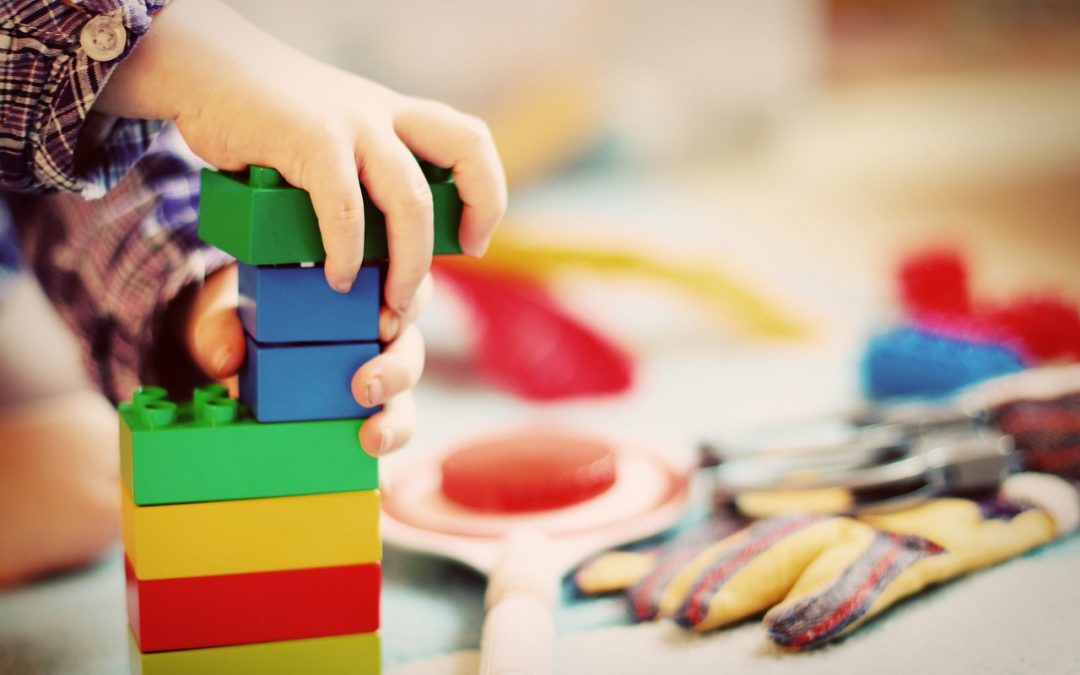Play Therapy Toys for Children with Autism
Posted by Brian Semling on Dec 21st 2018
Children with autism play differently than their peers, which can make playtime, an activity that should be fun and enjoyable, particularly stressful. When children play they communicate, listen, socialize and learn. What better way to provide therapy for children than through play? For children with autism, the method of play therapy may be especially effective.

With the tendency to have an intense passion for one or two specific interests, children with autism like to participate in their favorite activities during regimented routines. When that specific routine changes, they become overwhelmed and anxious. Additionally, while children with autism can enjoy the company of other children during playtime, they prefer to participate in parallel play (two children doing the same thing together, but each on their own). These combined characteristics make communication, collaboration, and symbolic thinking particularly challenging for children with autism during playtime. Play therapy attempts to overcome these challenges so children with autism can develop important social skills, build lasting friendships, and enjoy playtime to its fullest.
What is play therapy?
The Association for Play Therapy defines it as “the systematic use of a theoretical model wherein trained play therapists use the therapeutic powers of play to help children learn to communicate with others, express feelings, modify behavior, develop problem-solving skills, and learn a variety of ways of relating to others.” According to Gary Landreth, author of Play Therapy: the art of the relationship, play therapy builds on the natural way children learn about themselves and the relationships they develop with the people around them. In this way, this specific kind of therapy helps children communicate their problems, worries, and anxieties during playtime with the toys, games, and activities they love most.
The Benefits of Play Therapy for Children with Autism
Play therapy may help children with autism effectively express their emotions.
While children with autism spectrum disorder (ASD) play differently than children who aren’t on the spectrum, like any child, they still love to play. Differences like narrowly focusing on one particular feature of a toy, for example, the hair of a doll, or the wheels on a firetruck, make communication difficult for them during play time. This often results in isolation and can make children with ASD reluctant to play with others. Play therapy attempts to counteract these adverse effects to allow children with autism to successfully express themselves and their emotions through play and develop essential social skills that will benefit the rest of their lives.
Play therapy may help children with autism adjust to changes in their typical regimens and routines.
For children, environments are constantly changing. Whether they’re learning new subjects in school, playing new games with friends, or even eating new foods, it’s important for them to learn flexibility. Children with autism prefer to follow regimented routines and have a deep insistence on sameness. When their daily routines change, they become flustered. Play therapy helps children with emotional or social skill deficits learn adaptive behaviors that may allow them to successfully adjust to their changing environments.
What will my child do in play therapy?
There are three different methods of play therapy.
Floor Time
Floor time is a method of play therapy where the therapist gets down on the floor to play with a child on their terms. The adult plays the exact same way the child does, but the adult adds something to the activity. You could add a new character, or incorporate new words and language, but it gives the child room to lead while also introducing them to new things. This makes them more comfortable with spontaneous additions, helping them to be flexible and adaptive.
Integrated Play Groups (IPG)
Integrated play groups integrate children with and without ASD. All of the children play together so children with ASD can practice playtime wherein their peers take the lead. Groups usually consist of three to five children and meet weekly. Research shows that children with ASD who attended two 30-minute IPG sessions per week for 4 months improved their quality of play, used their toys in a more typical fashion, and showed improved social interaction with their peers.
Joint Attention Symbolic Play Engagement and Regulation (JASPER)
JASPER helps children improve their joint attention skills, which allow them to focus on more than one thing at a time, for example, a toy and a person. Improving these skills through play therapy can improve the way children with autism play with others.
Open-ended play and creative expression toys for children with autism.
Commonly used in play therapy, open-ended play is when children have the ability to make their own decisions and fully engage their creativity and imagination. Open-ended play materials are non-descript items that a child can play with freely. Examples of open-ended play materials include:
- Cardboard boxes
- Clay
- Sand
- Strictly Briks building bricks
- Fabrics
- Paper supplies
Strictly Briks toys advance children’s communication and collaboration skills.
Strictly Briks’ baseplate and brick sets include no instructions, allowing your child to express their imagination and share their creations freely with their friends and family. With our toys, children have endless building possibilities. Whether they’re building a top-secret lair for the bad guys, or a castle for the princess, the storyline is up to them. As they create their own stories and share them with friends, children practice their communication and collaboration skills.
Strictly Briks toys allow children to be creative and experiment. Without instructions, children are free to test out different building methods, push their usual comfort zones, and learn along the way. Benefit your child’s social and intellectual development and enhance their communication and collaboration skills with Strictly Briks toys.
